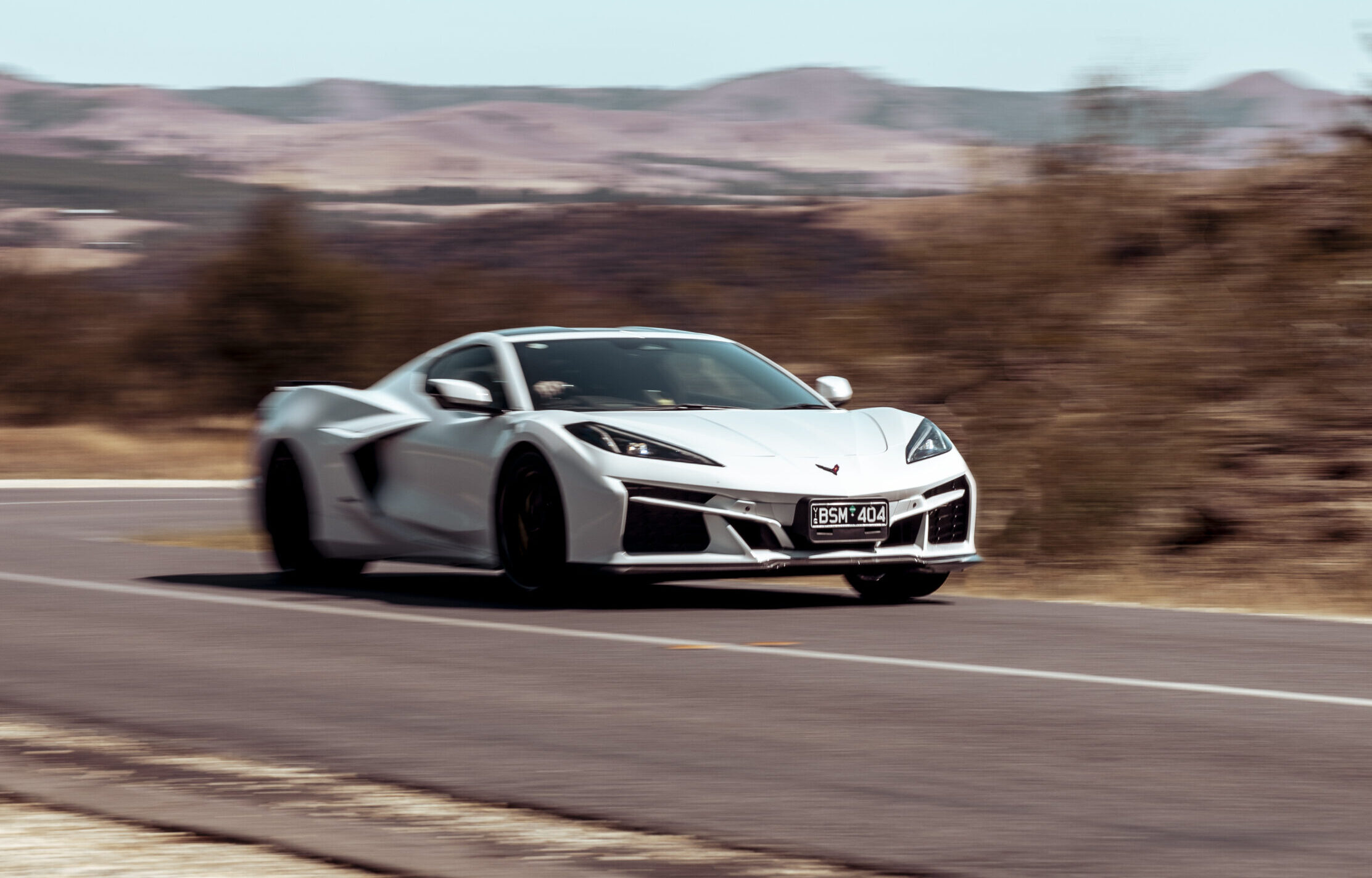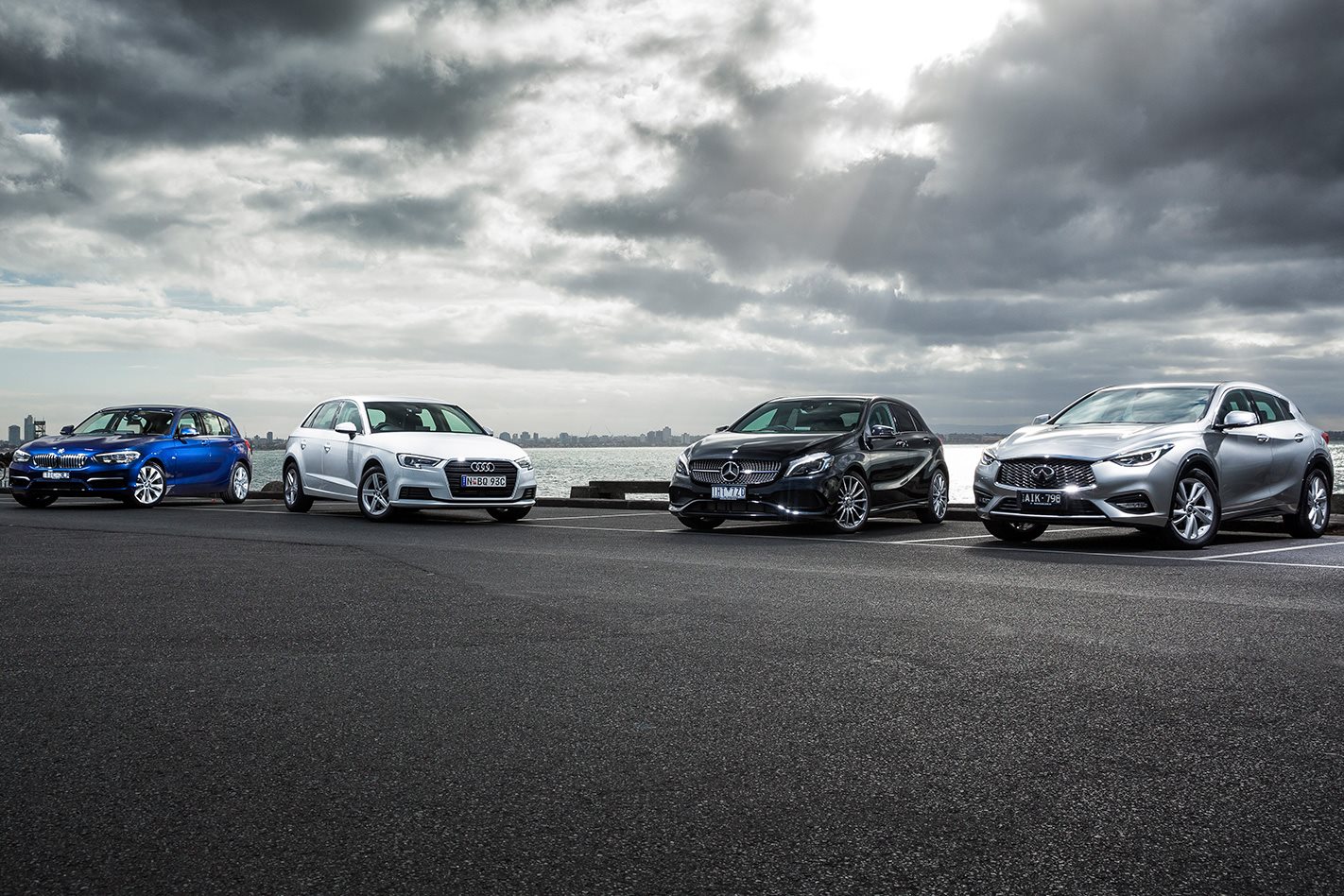
2016 May have been a terrible year for democracy with the UK Brexit-ing herself out of the European Union and Trump blundering into the White House. But one carmaker bucked the trend with a bold symbol of internationalism.
Brandishing Japanese design, leveraging German engineering (using Mercedes-Benz’s front-drive architecture) and built in England for reasons probably only Brazilian Carlos Ghosn knows, the Infiniti Q30 represents hope for unity and cooperation.
But does Infiniti’s Audi A3 rival have what it needs to go against the premium small-car establishment? Or is this just a hot mess of identity confusion?
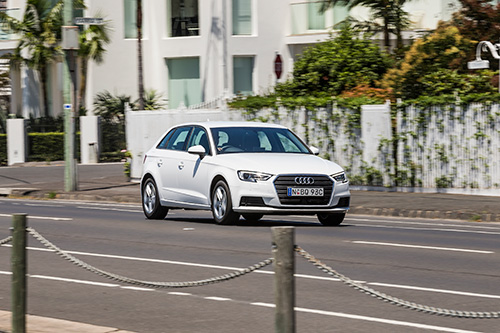
The thing is, the high-riding 1.6t GT opener from $38,900 is about $4500 less than the Benz GLA crossover it most closely aligns to, or just $500 more than the low-slung A180, so the latter is what we’re pitching Japan’s hopeful against. Suddenly, in SUV-crazy Australia, the sub-$40K premium hatch stoush is about to become very interesting.
While metallic paint is the test Infiniti’s only option, our A180 arrived wearing a $44,000 sticker, courtesy of an AMG-branded appearance package, fancy paint, LED headlights and a sunroof. But what a transformation. Sexy, sporty and squat, this base A180 could totally pull off an A45 badge kit.
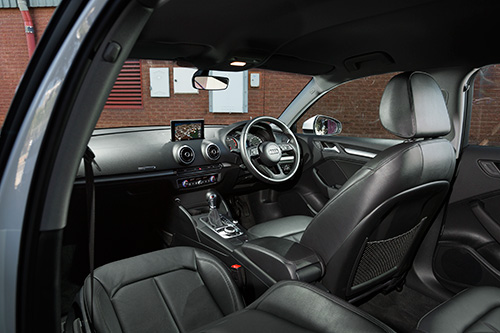
Joining this extended family feud are two ferocious foes who have – like the A-Class back in late 2015 – undergone minor styling and spec makeovers (contained mainly to headlights, tail-lights, multimedia systems, and cabin materials), and major powertrain changes.
Has it really been 20 years since the original A3 hit our streets? If you ignore ’80s misfits such as the Alfa 33 and Volvo 360, it was Ingolstadt’s genius decision to dovetail development of its secret all-new premium hatch with sister-brand Volkswagen’s aspirational Golf that really begat this segment.
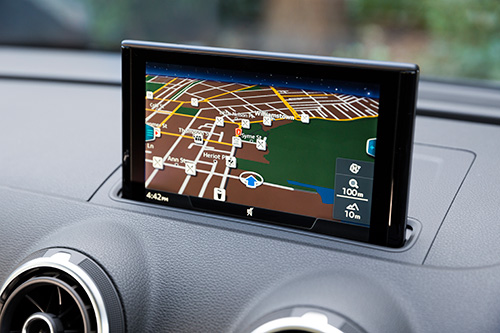
Three generations later, the German sisters sire off the MQB platform that helped the Wolfsburg version claim our 2013 COTY gong. With such impeccable provenance then, the A3 Sportback 1.0 TFSI that arrived with last November’s facelift scores an early showroom victory at just $35,900.
Which leads us to our final contestant as well as the oldest vehicle here, the 118i. Admittedly, the first BMW Compact did beat Audi’s original A3 to market by a couple of years back in the day, but debasing an E36 3 Series with a Manx cat-style stunted tail while destabilising its renowned dynamics with a cheapo rear suspension utterly missed the marque.
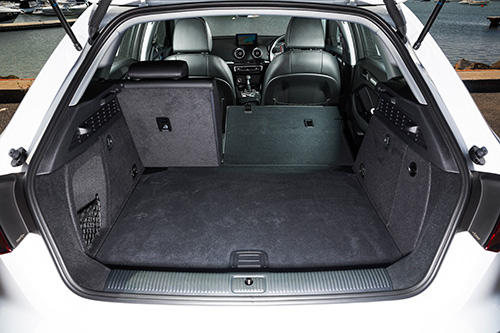
To Munich’s credit, no such anomalies have blighted two iterations of 1 Series over the last dozen years. The latest F20, launched in 2011 but updated in 2015, sees the 118i kick off from a tenner under $38,000. Ours wears a $46K sticker thanks to an Urban Line pack consisting of leather and sports wheel, 17-inch alloys, metallic paint, sunroof, front sensors, Lane Departure Warning and Autonomous Emergency Braking (the only model here not having AEB as standard).
What the BMW does deliver is the test’s only longitudinal rear-wheel-drive layout… and you know what? Pushing rather than pulling doesn’t come at the cost of interior packaging. And that’s no alternative fact.
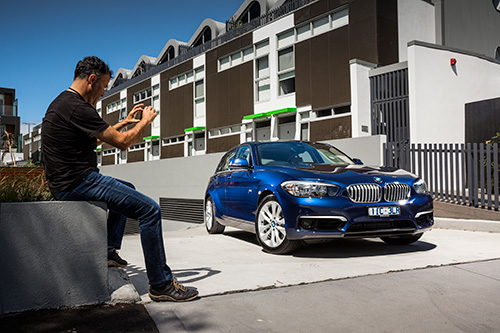
Big diff hump or not, the proudly cab-backward 118 is old-school on-brand driver-focused solidity inside, underlined by a no-nonsense austerity, firm yet supportive front seats, and the now-sorted iDrive interface. As with all the hatchbacks here, front legroom is vast if nobody’s sat behind, with the cushions capable of being positioned low enough for that bathtub feel – a bit of a Chris Bangle-era trait, betraying this 2011-vintage Bavarian’s advancing years.
Furthermore, the defining ‘Hofmeister kink’ in the 118i’s rear door actually aids entry/egress. Headroom is sufficient, the backrest well angled, and knee space is fine. On the flipside, that wide floor hump plays havoc with middle-occupant feet, greater thigh support would be welcome, and there’s a dearth of vents, storage, and individual reading lights. All for the driver, then.
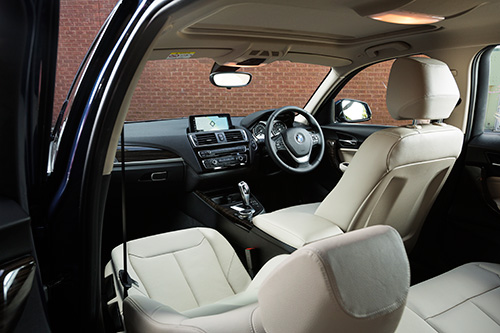
Only the Audi obliges with all of the above, and then goes further by providing the largest, roomiest, brightest, easiest to access and most accommodating interior. It’s also the widest and airiest, the upshot of the six-window design silhouette. Here’s your ride if rear passenger space and amenities are paramount.
And that dashboard! Still modern and daring five years on, the A3’s fascia is functional art, like a Kitchen Aid blender, effortlessly meshing multi-faceted design. Nothing seems wasted or excessive, much is sensual, and everything is cultured. For sheer showroom charisma, look no further.
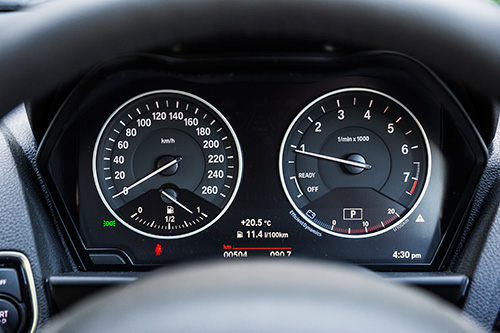
Similarly, the A180 also exudes a certain swagger and charm, but to an audience that might appreciate Lady Gaga more than, say, Dame Kiri Te Kanawa.
Brash, bold and youthful in AMG Line guise, the Benz’s packaging is almost anti-Audi, down to the coupe-like roof line and cosier rear quarters. Artificial seat materials gel well with the cold black running-shoe ambience, but that – and a cacophony of squeaks and rattles in our admittedly high-mileage test car – also sit awkwardly with the Three Pointed Star’s blue chip reputation. This isn’t your grandfather’s W123 230E.
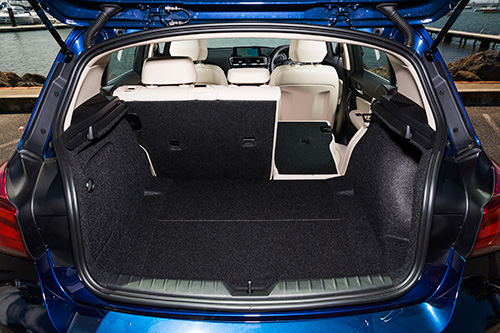
Funky to behold, the tombstone-shaped front seats spoon your butt well enough, but completely ignore the upper back. Getting to the rear bench requires neck-angling gymnastics, the low cushion offers scant support and the high waistline promotes a hemmed-in feel.
Considering how much MFA parts commonality exists between the two, the Q30 makes a better fist of things, beginning with its loftier hip point afforded by the extra ride height. The relatively plush front seats are easily more supportive (though the rears are identical), forward vision is better, and there’s a greater sense of spaciousness. The three-year head start the Q30 enjoyed has clearly been put to good use.
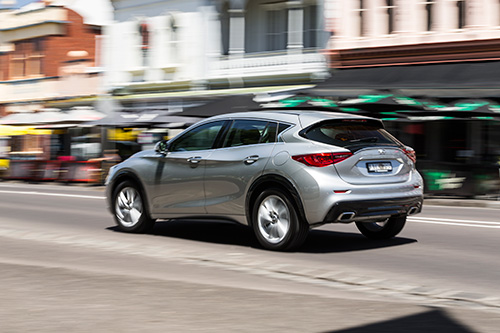
Plus, the 1.6t GT is far from basic, being the best equipped, barring a glaring reverse camera omission. All visible surfaces are soft to the touch, the finish is exemplary, and its cabin is the quietest. We’re no fans of the wilfully unintuitive multimedia system, though, and there’s no visual cohesion with the mixing of Mercedes-Benz and Nissan switchgear. This is like the lovechild between an A-Class and a Qashqai. Remember, Infiniti, your deadliest rival is the A3…
Oddly, considering that the same money buys a Holden Calais, there isn’t a single rear-seat centre armrest among this chi-chi hatchback quartet. Even the Holden Premier of half a century ago had one.
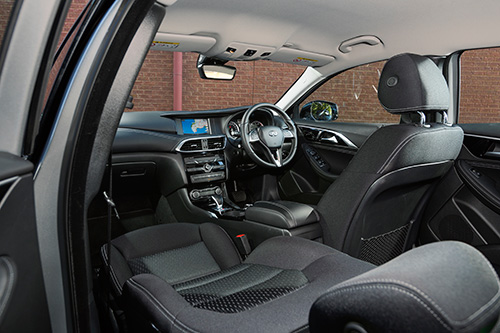
Thankfully, there has been no performance downgrading due to any powertrain downsizing, though only the A3 and Q30 – with their respective 1.0 TFSI and 1.6t designations – aren’t attempting to exaggerate the size of their donks. Unlike the A180 and 118i.
On paper, the Q30’s zingy 115kW/250Nm 1.6-litre turbo (nicked from the homely Benz B180) ought to be the strongest by some margin. And, sure enough, mated to Mercedes’ seven-speed dual-clutch transmission, it feels brisk at take-off following the now-inevitable DCT/turbo moment of hesitation, and then keeps on pulling hard, managing a reasonable 6.6sec from 80 to 120km/h. But its ho-hum 0-100km/h time of 9.5sec reflects the crossover’s hefty 1470kg mass.
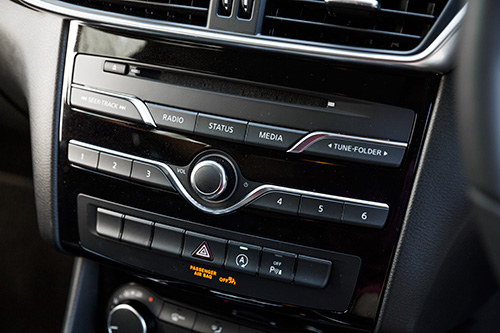
In contrast, the A180 with a 90kW/200Nm tune of the Infiniti’s four-cylinder powertrain, blitzed up the strip: 9.2sec to 100km/h and an ever-widening gap thereafter. In fact, these figures are deceptive because the sparkling A180 felt considerably rortier and livelier across the entire rev range, and that’s probably due to a combination of lower weight (by about 80kg) and higher mileage (10,000km versus 3000km). The latter was probably also behind the Benz’s superior fuel efficiency (7.7L/100km versus the Q30’s 7.9).
The reverse situation applied to our box-fresh 118i. Its 100kW/220Nm 1.5-litre three-pot turbo lobbed in with just under 500km on the clock, and so felt extremely green. Still, tied to the foursome’s only torque-converter auto (and ZF’s brilliantly intuitive eight-speeder at that), the 1320kg BMW relies on a swell of mid-range urge and perfectly placed ratios to pile on speed quickly, and remarkably effortlessly.
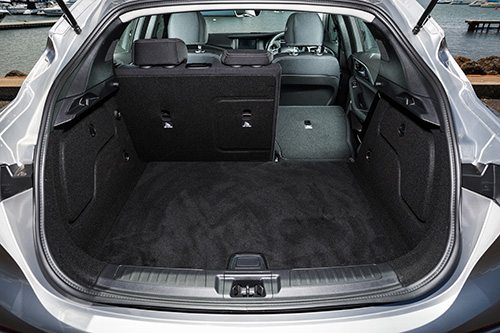
For such a tight unit, achieving 9.6sec to 100km/h is actually promising, as is the 6.9sec from 80-120km/h. By the end this engine already felt freer and friskier. A 3000km-old Mini Clubman with the same 1.5 lopped almost a second off both results during a comparo last year. The quartet’s thirstiest fuel consumption figure (8.0L/100km) should also improve with mileage.
Would it ever match the 85kW/200Nm 1.0-litre three-cylinder turbo A3’s laudable 6.6L/100km though? Unlikely, as the Audi was also barely run-in, and – believe us – this sweet yet stirring little firecracker was caned mercilessly. At just 1200kg, being the posse’s featherweight also assisted, as did an annoyingly lazy and intrusive idle-stop system that most owners would surely shutdown forever.
Possessing the slickest and most responsive dual-clutch of the bunch helped the dinkiest powertrain here achieve its 9.9sec sprint to 100km/h, and even saw seven-flat from 80-120km/h, so the base A3 Sportback is hardly compromised by its tiny heart. Like all the terrific little turbos assembled here, the A3 thrives on revs, forcefully punching above its weight and rarely getting caught off-boost. Past the occasional low-speed acceleration hiccup, we’d bet that few passengers would even pick that a trio of cylinders beat beyond the Audi’s (and BMW’s) well-insulated firewalls.
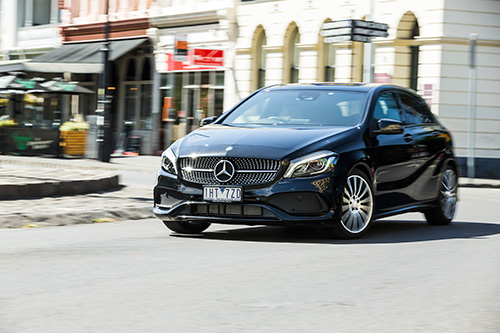
But we’d wager they’d soon tire of the Sportback’s equally boisterous ride.
The 1.0 TFSI is the first current-shape A3 petrol variant to downgrade to a torsion beam rear suspension (joining the near-invisible 1.6 TDI turbo-diesel). This is a retrograde step for two reasons.
Firstly, the Audi’s lower-speed comfort rating has taken a dive, with the rear axle now struggling to calmly absorb the sort of minor irregularities that the previous – and continuing on every other A3 – multi-link back end so ably coped with. And bigger bumps can cause the car to skip slightly. It’s as if the front and rear ends no longer work in unison. All semblance of settled suppleness vanishes the moment smooth road surfaces do. There also seems to be greater tyre and road noise.
Secondly, the more sophisticated rear end kinematics of multi-link A3s that helps direct the front end seamlessly through faster corners is absent, resulting in more isolated steering as well as duller, more inert handling. Sure, pressing on and shifting load onto its outside rear certainly aids the torsion-beam A3’s turn-in and balance, but that lithe athleticism central to the best MQB set-ups has vanished. Indeeed, hit a pothole and the whole thing will jolt off course like it’s just broken a stiletto mid-boogie. Has BMW’s sorry experience with the bean-counter-stripped E36 Compact amounted to nil?
Solution? Simply pay the extra $4000 and step up to the continuing 110kW A3 1.4 TFSI, restoring the independent multi-link back end. Problem solved.
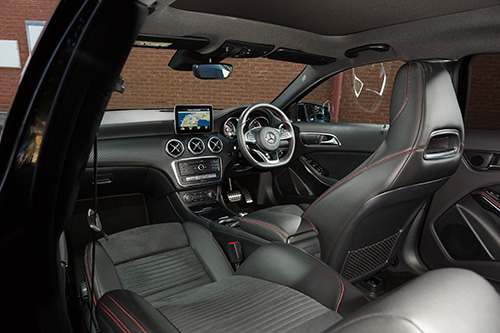
A tetchy, at times pounding ride, also hurts the A180 on AMG Line 18s over anything other than gentle or glassy surfaces. But the Mercedes behaves like she’s dressed and ready for the track, with swift steering, agile handling, and rock-solid roadholding that can put a massive girl/boy-racer grin on the glummest face. There is a sub hot-hatch fervour to the A-Class’s dynamics that almost make you forgive just how harsh and vociferous its underpinnings can be.
Like the Audi, much of this pain can be avoided by choosing the enticing A200 from $44K, with heaps more oomph and the essential standard adaptive dampers. We’re starting to see a pattern here.
Or… consider the Q30. Compared to the other two, it somehow suggests the sort of cocooning long-travel suspension comfort and softness associated with old-school French cars (and the latest Peugeot 308), without the penalty of excessive body roll.
This is the first MFA vehicle we’ve tested with a cushy ride, and yet the A-Class’s core dynamic goodness essentially remains intact. Q30’s steering turns in with measured surety, backed up by accurate and planted handling. Jumping from the knuckled-down Benz to the lofty Infiniti invariably reveals some degree of lateral motion for occupants, but the point is the Q30 isn’t trying to be a pocket rocket. It says so right there with the GT grand-touring badge.
That the Japanese marque also smashed the panic-stop 100km/h-0 brake test by a sizeable margin (pipping even the Benz and shaming the others) further boosted our admiration for the engineers who tuned this car on craggy UK roads. Bravo, Infiniti.
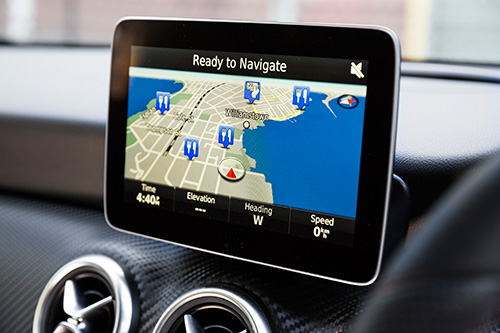
Which leaves the BMW. The only rear-drive hatch here needs to be reassessed and celebrated for what it delivers to the keen driver. Even in its lowliest guise, the BMW’s chassis gels on the right road to provide smooth, flowing, and involving handling. Its steering feels the most connected of the quartet, as well as the most fluid, encouraging the driver to push hard, and delivering dynamic reward as a result.
The 118i’s ride comfort is fundamentally okay, though this is also very dependent on occupant numbers and the state of the bitumen. With only the front seats occupied, and on optional 17-inch rubber, the BMW’s suspension is firm and springy, but also fairly compliant over more serious hits, smoothing out speed humps with surprising insouciance.
Add two more passengers and the BMW’s comfort levels deteriorate, sometimes taking on a hard, jostling and noisy attitude that can be tiresome. As with its Mercedes-Benz rival, we feel it necessary to either move up the range or dive into the options list. In this case, check $2200 worth of adaptive dampers.
At least the 118i’s ride is fixable. The A3 1.0 TFSI’s retrograde rear suspension undermines the occupant comfort and dilutes the driving pleasure that comes so naturally to higher-spec variants. Not very Vorsprung Durch Technik. Despite the turbo-triple’s relatively enticing price, there’s much better value higher up the range. A 1.4 TFSI might have even won this comparison, so don’t discount Audi’s pioneer.
In many ways, the A180 with AMG Line is the most successfully focused and switched-on car here, delivering on its styling promise with unapologetic sportiness and fun – on the right roads. But the jarring suspension, road noise, squeaky trim and somewhat contrived cabin aren’t worthy of this great marque. The next-generation A-Class isn’t far away, by the way.

Undoubtedly the surprise of this comparo, the Q30 1.6t GT is a real grower – the calming ying to its Daimler cousin’s aggressive yang. Representing a well-equipped, comfortable, effortless, refined and quality alternative, the Infiniti isn’t nearly as confused as its multicultural heritage – or divisive styling inside and out – suggests. Plus this is the only hatch here that doesn’t require extra expenditure to cure any ill manners. But as the newest set of wheels here, merely matching rather than bounding over the ageing Teutons simply isn’t enough.
So the oldest car wins, almost by default, because the 118i displays BMW-in-a-concentrate dynamics, performance, efficiency, solidity, and technology, and manages to feel the most special as a result. Occasionally irritating ride and the odd spec issue can’t keep the most on-brand contender down, but nor is this a brilliant victory either.
In fact, good as these four entry-level premium hatchbacks are, we feel that all might struggle against at least three cheaper mainstream alternatives in their most competitive spec – Volkswagen Golf, Peugeot 308 and Holden’s impressive new Astra.
See, democracy can prevail in 2017.



